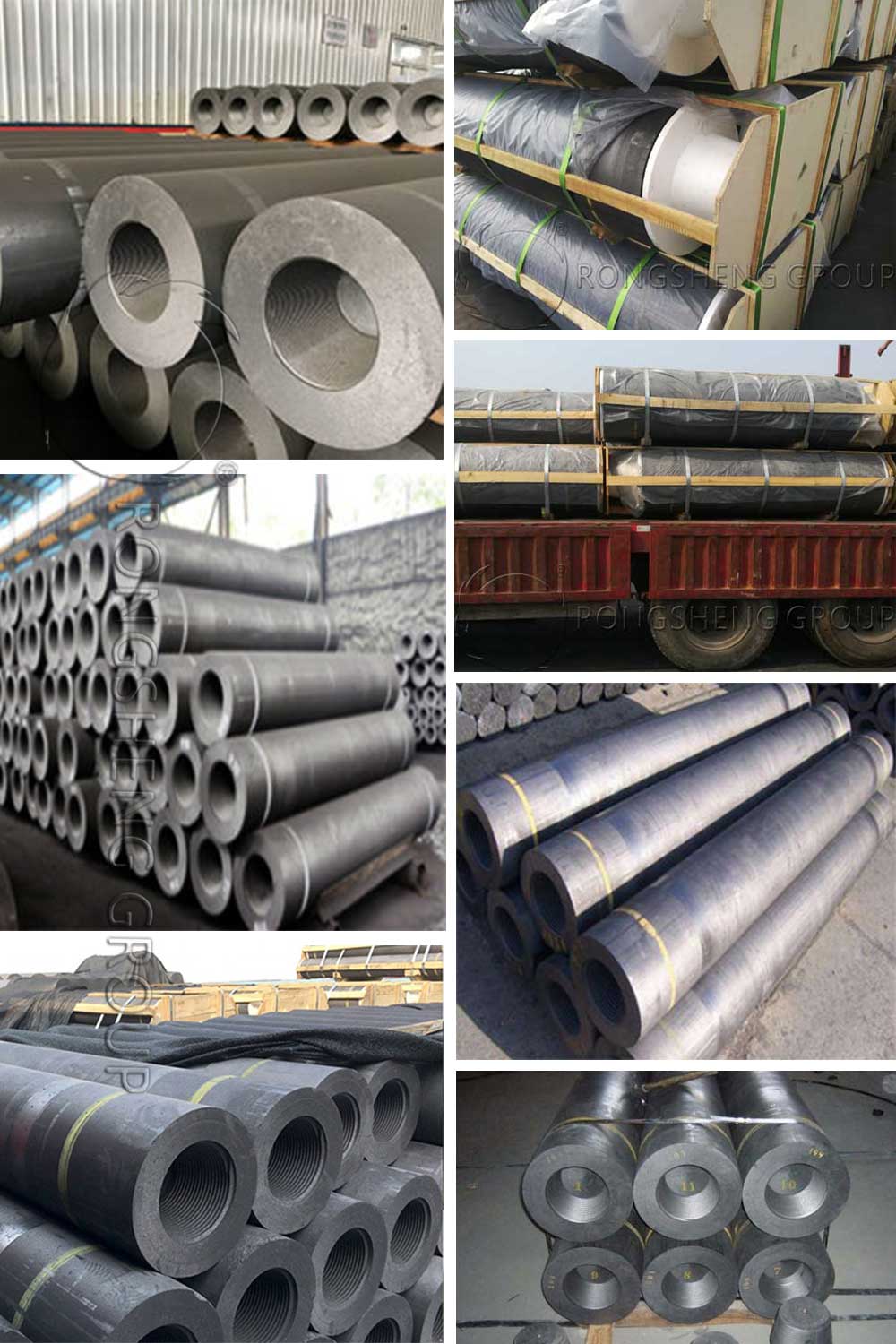Graphite electrode is an important carbon material that is widely used in industrial production and scientific research due to its unique physical and chemical properties. Rongsheng manufacturers can provide high-quality graphite electrode products. This article will delve into the characteristics, applications, and future development trends of graphite electrodes.

- Characteristics of graphite electrodes.
Graphite electrodes are mainly composed of pure flake graphite, which has good electrical conductivity and high-temperature resistance. Its melting point is as high as 3652°C, which is the highest melting point among known substances. In addition, graphite electrodes also have excellent chemical stability and corrosion resistance and can maintain stable performance in many extreme environments.
- Application of graphite electrodes
iron industry. In the steel industry, graphite electrodes are mainly used in electric arc furnace steelmaking. The electric arc furnace uses the arc generated between the graphite electrode and the charge to smelt metal to achieve the purpose of refining molten steel. Graphite electrodes play the dual roles of conductivity and high-temperature resistance in this process, ensuring the smooth progress of the electric furnace steelmaking process.
battery industry. Graphite electrodes are also an important raw material for lithium batteries and lead-acid batteries. In batteries, graphite electrodes serve as negative electrode materials and can store and release large amounts of electrical energy. Its excellent conductivity and stability help improve battery performance and life.
Semiconductor Industry. Graphite electrodes are mainly used in the semiconductor industry for the growth of wide bandgap semiconductors such as silicon carbide and gallium nitride. These semiconductor materials are grown on graphite electrodes and processed to create high-performance electronic devices.
Aerospace field. Because graphite electrodes have excellent high-temperature resistance and chemical stability, they are also widely used in the aerospace field. For example, graphite materials are used to make rocket engine nozzles and aircraft brake pads. Its excellent performance can ensure safe and reliable work in extreme environments.
- Future development of graphite electrodes
With the continuous advancement of science and technology, the application prospects of graphite electrodes will be broader. In the future, graphite electrodes are expected to play an important role in new energy, new materials, high-end equipment manufacturing, and other fields. For example, using graphite electrodes to prepare new energy storage devices such as high-performance lithium-sulfur batteries and solid-state batteries will help solve the problems of low energy density and slow charging speed of traditional batteries. In addition, graphite electrodes also have broad application prospects in the fields of high-temperature superconducting material preparation and carbon nanotube growth.
In order to meet the demand for graphite electrode performance in different fields. Future research will focus more on the modification, compounding, and optimization of graphite electrode materials. By improving the preparation process, adding alloy elements, compounding with other materials, etc. The conductivity, mechanical properties, and chemical stability of graphite electrodes can be further improved, thus expanding their application fields.
In short, graphite electrodes, as an important carbon material, play an important role in many fields. With the continuous advancement of technology and the in-depth expansion of applications, graphite electrodes will show broader development prospects in the future. Through in-depth research on its characteristics and continuous expansion of application fields, we have reason to believe that graphite electrodes will make greater contributions to the scientific and technological progress and sustainable development of human society in the future.
